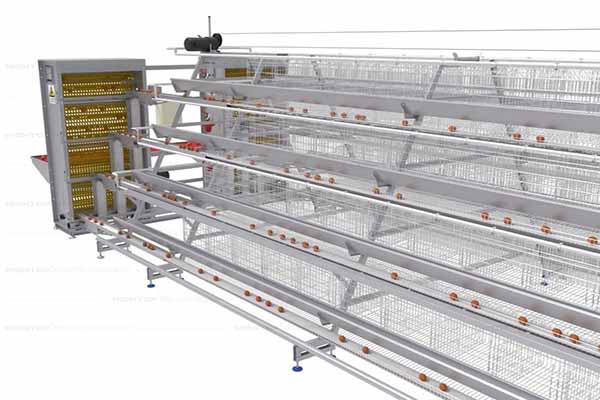Do Cages Have Earthquake Resistance? Insights for Chicken Farm Owners
Understanding Earthquake Resistance in Chicken Cages
Chicken farming is a vital industry, and the well-being of birds is crucial for profitability. One of the most pressing concerns for chicken farm owners and investors is the structural integrity of chicken cages in the event of an earthquake. In this article, we will explore the earthquake resistance of chicken cages and how it affects your farming operation.
1. The Importance of Earthquake Resistance in Chicken Cages
An earthquake can have catastrophic consequences for a chicken farm. Not only can it cause physical damage to the structure, but it can also lead to stress among the chickens, potentially affecting their health and production.
2. Factors Affecting Earthquake Resistance
Several factors influence the earthquake resistance of chicken cages:
– Material Quality: High-quality steel or reinforced concrete is crucial for building strong and durable cages.
– Design and Construction: Proper design, including reinforcement and secure connections, enhances the cage’s resilience.
– Location: Chicken cages built in areas prone to earthquakes must be more robust and meet stringent safety standards.
3. Common Design Features for Earthquake-Resistant Cages
– Cross Bracing: This involves adding diagonal supports to provide additional stability.
– Reinforced Concrete: Using reinforced concrete in the foundation and walls of the cage can significantly improve its earthquake resistance.
– Seismic Restraints: These are mechanical devices that can secure the cage during seismic activity.
4. Data and Statistics
According to a study conducted by the U.S. Geological Survey, chicken farms located in earthquake-prone regions face an increased risk of damage, with estimated costs exceeding $500,000 in severe events.
| Category | Costs Estimate ($USD) |
|——————-|———————-|
| Minor Damage | $10,000 – $50,000 |
| Moderate Damage | $50,000 – $250,000 |
| Severe Damage | $250,000 – $500,000 |
| Catastrophic | Over $500,000 |
5. Best Practices for Chicken Cages in Earthquake-Prone Areas
– Consult with Structural Engineers: They can provide expert advice on the best construction methods for your specific location.
– Regular Maintenance: Regularly inspect and maintain the cages to ensure they remain secure and earthquake-resistant.
– Emergency Preparedness: Develop an emergency plan to quickly secure chickens in the event of an earthquake.
6. Conclusion
Investing in earthquake-resistant chicken cages is essential for the long-term sustainability of your farming operation. By understanding the factors that contribute to earthquake resistance and implementing best practices, you can protect your investment and ensure the safety of your birds.
To further enhance your chicken farm’s safety and efficiency, get in touch with LIVI Mechanical. We offer complimentary chicken design plans and equipment quotations. Don’t wait until an earthquake strikes—contact us today!
For more information, leave a comment or visit our website.
<img src="http://www.qualitychickenfarm.com/wp-content/uploads/2025/06/automatic-manural-sy stem-installation.jpg” alt=”inserted image”>
stem-installation.jpg” alt=”inserted image”>




